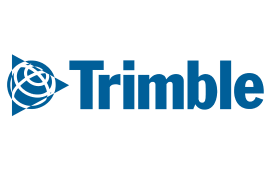The Future of Electrical Estimating Software
The Future of Electrical Estimating Software: Innovations in 2025 and Beyond
The electrical contracting industry has always been driven by precision and efficiency. As we step into 2025, technological advancements in estimating software are transforming the way electrical contractors approach project planning, budgeting, and execution. Here’s a look at the groundbreaking features that are shaping estimating software today and what we can expect in the years ahead.
1. Artificial Intelligence (AI) and Machine Learning
AI and machine learning are no longer futuristic concepts; they are essential tools in modern estimating software. These technologies analyze historical data to provide more accurate estimates, reduce manual errors, and identify potential cost-saving opportunities. In the coming years, we can expect even more sophisticated algorithms that will predict project risks and suggest optimal resource allocation strategies.
2. Cloud-Based Solutions
Cloud-based estimating software has become the industry standard, offering flexibility and real-time collaboration. In 2025, more contractors are adopting cloud solutions to access project data from any location. Future developments may include enhanced security protocols, offline capabilities, and seamless integration with other project management tools.
3. Augmented Reality (AR) and Virtual Reality (VR)
AR and VR technologies are making significant strides in electrical estimating. These tools allow contractors to visualize complex projects before they begin, ensuring accurate takeoffs and better communication with clients. In the near future, AR applications could enable on-site estimators to overlay digital plans onto physical spaces for more precise measurements.
4. Integration with Building Information Modeling (BIM)
BIM has become a critical component of modern construction projects. Estimating software in 2025 integrates seamlessly with BIM, providing contractors with real-time access to detailed project models. This integration improves collaboration between stakeholders, reduces rework, and ensures accurate cost predictions based on live data.
5. Automation and Robotic Process Automation (RPA)
Automation is streamlining many aspects of electrical estimating. RPA technology automates repetitive tasks such as data entry and document generation, freeing up time for contractors to focus on strategic decision-making. As RPA evolves, we can expect more intuitive interfaces and greater customization options.
6. Predictive Analytics and Big Data
Predictive analytics powered by big data is helping electrical contractors forecast project outcomes with remarkable accuracy. In 2025, estimating software uses vast amounts of data to identify trends, anticipate challenges, and recommend solutions. Future advancements may include predictive models that adjust estimates in real-time based on changing project conditions.
7. Mobile Accessibility and Remote Collaboration
With the rise of remote work, mobile-friendly estimating software has become indispensable. In 2025, applications offer intuitive mobile interfaces that allow contractors to update estimates, share documents, and communicate with team members from the field. Expect future developments to enhance offline functionality and introduce AI-driven mobile assistants.
8. Cybersecurity and Data Protection
As estimating software becomes more interconnected, cybersecurity is a growing concern. Modern platforms in 2025 prioritize data protection with advanced encryption, multi-factor authentication, and regular security audits. Looking ahead, we can expect innovations such as blockchain technology to further secure project data and transactions.
Conclusion
The evolution of electrical estimating software in 2025 is marked by smarter algorithms, greater connectivity, and enhanced user experiences. Electrical contractors who embrace these innovations will gain a competitive edge through improved accuracy, efficiency, and collaboration. As technology continues to advance, staying informed and adaptable will be key to success in the ever-changing landscape of electrical contracting.

Contact Us
Schedule a Consultation
(*) - Required field
Our Partners




